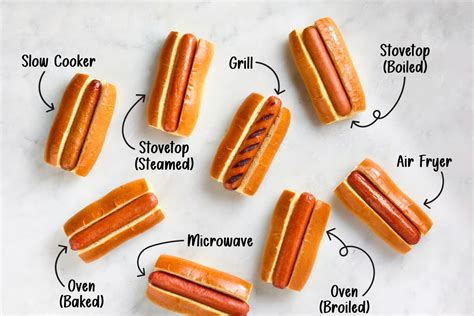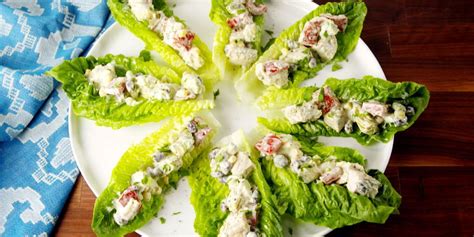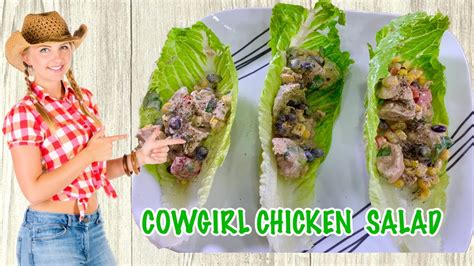
The quest for the perfect hot dog culminated in a head-to-head cooking competition, with boiling emerging as the surprisingly superior method, edging out grilling, pan-frying, and even air frying, according to a comprehensive test of eight different cooking techniques.
The methodology focused on taste, texture, and overall ease of preparation. The tested methods included boiling, grilling, pan-frying, microwaving, air frying, roasting, sous vide, and using a hot dog cooker. Testers found that boiling produced the most consistently juicy and flavorful hot dog, a result contrary to common assumptions about grilling’s dominance. “Boiling won out in the end,” the source confirms, highlighting its ability to plump the hot dog and deliver optimal taste and texture.
The experiment, conducted by a team of food enthusiasts, aimed to settle the age-old debate of the best way to cook a hot dog. Each method was meticulously tested using the same brand and type of hot dog to ensure a fair comparison. Factors such as cooking time, ease of cleanup, and potential for charring or uneven cooking were also considered.
While grilling is often touted as the ideal method for its smoky flavor and appealing char marks, it proved to be less consistent, often resulting in dry or burnt hot dogs. Pan-frying offered a decent alternative, producing a slightly crispier exterior, but it lacked the overall juiciness achieved through boiling. The air fryer, a popular kitchen gadget, yielded mixed results, with some testers finding the texture too dry.
The less conventional methods, such as roasting and sous vide, also fell short of expectations. Roasting took too long and didn’t significantly enhance the flavor, while sous vide, although producing a uniformly cooked hot dog, lacked the desired textural contrast. The hot dog cooker, specifically designed for the task, delivered acceptable results but didn’t outperform boiling in terms of taste and texture.
Ultimately, the boiling method’s simplicity and reliability secured its victory. It required minimal effort, produced consistently juicy and flavorful hot dogs, and was easy to clean up. This outcome challenges conventional wisdom and offers a practical solution for anyone seeking the perfect hot dog experience.
In-Depth Analysis of Each Cooking Method
To fully appreciate the outcome of this hot dog showdown, a more detailed examination of each cooking method is essential. Understanding the nuances of each technique will provide a clearer picture of why boiling emerged as the champion.
-
Boiling: This method involves submerging the hot dog in boiling water for a specific period. The hot water penetrates the hot dog, heating it evenly and causing it to plump up. The result is a juicy, tender hot dog with a mild flavor. One of the major advantages of boiling is its simplicity. It requires minimal effort and equipment, making it a convenient option for a quick meal. Cleanup is also easy, as there is no grease or residue to deal with. However, some critics argue that boiling can dilute the flavor of the hot dog. The testers in the experiment found that this was not the case, as boiling consistently produced flavorful results. The cooking time is also relatively short, typically around 5-7 minutes, depending on the size of the hot dog.
-
Grilling: Grilling involves cooking the hot dog over an open flame or hot coals. This method is often preferred for its ability to impart a smoky flavor and create appealing char marks. However, grilling can be tricky. It requires careful attention to prevent the hot dog from burning on the outside while remaining cold on the inside. The heat distribution can be uneven, leading to inconsistent results. The testers in the experiment found that grilling often resulted in dry or burnt hot dogs, especially if they were left on the grill for too long. Grilling also requires more effort and cleanup than boiling. The grill needs to be preheated, and the grates need to be cleaned after use. Despite its potential drawbacks, grilling can still be a good option for those who enjoy the smoky flavor and are willing to put in the extra effort.
-
Pan-Frying: Pan-frying involves cooking the hot dog in a skillet or frying pan with a small amount of oil or butter. This method can produce a slightly crispier exterior than boiling, but it can also be greasy if too much oil is used. Pan-frying requires moderate attention to prevent the hot dog from sticking to the pan or burning. The heat distribution can be more even than grilling, but it still requires some adjustment to ensure that the hot dog is cooked through. The testers in the experiment found that pan-frying offered a decent alternative to boiling, but it lacked the overall juiciness. Cleanup can be slightly more involved than boiling, as there is grease to deal with.
-
Microwaving: Microwaving is the quickest and easiest way to cook a hot dog. It involves placing the hot dog in a microwave-safe dish and heating it for a short period. However, microwaving often results in a rubbery texture and uneven cooking. The hot dog can also explode if heated for too long. The testers in the experiment found that microwaving produced the least desirable results. The hot dog was often dry and lacked flavor. Microwaving is best reserved for situations where time is of the essence and quality is not a primary concern.
-
Air Frying: Air frying has become increasingly popular in recent years as a healthier alternative to deep frying. It involves cooking the hot dog in an air fryer, which circulates hot air around the food. Air frying can produce a crispy exterior with less oil than pan-frying. However, the texture can sometimes be dry, especially if the hot dog is cooked for too long. The testers in the experiment found that air frying yielded mixed results. Some testers found the texture too dry, while others appreciated the crispy exterior. The cooking time and temperature need to be carefully adjusted to prevent the hot dog from drying out.
-
Roasting: Roasting involves cooking the hot dog in an oven at a moderate temperature. This method is similar to grilling, but it provides more even heat distribution. Roasting can produce a flavorful hot dog, but it takes longer than other methods. The testers in the experiment found that roasting took too long and didn’t significantly enhance the flavor. Roasting is best suited for cooking a large batch of hot dogs at once, rather than a single serving.
-
Sous Vide: Sous vide involves cooking the hot dog in a water bath at a precise temperature. This method ensures that the hot dog is cooked evenly throughout, with no risk of overcooking. However, sous vide requires special equipment and takes longer than other methods. The testers in the experiment found that sous vide, although producing a uniformly cooked hot dog, lacked the desired textural contrast. The hot dog was tender but lacked the slight crispness that some of the other methods provided.
-
Hot Dog Cooker: A hot dog cooker is a specialized appliance designed specifically for cooking hot dogs. These cookers typically use steam or dry heat to cook the hot dogs. They can be convenient for cooking multiple hot dogs at once, but they don’t always produce the best results. The testers in the experiment found that the hot dog cooker delivered acceptable results but didn’t outperform boiling in terms of taste and texture.
Why Boiling Won: A Deeper Dive
While the experiment clearly favored boiling, it’s crucial to understand the underlying reasons for its success. Several factors contributed to boiling’s victory:
-
Moisture Retention: Boiling helps the hot dog retain moisture, resulting in a juicy and tender texture. The hot water penetrates the hot dog, preventing it from drying out during cooking. This is particularly important for hot dogs that are made with leaner meats, which can become dry when cooked using other methods.
-
Even Cooking: Boiling ensures that the hot dog is cooked evenly throughout. The hot water surrounds the hot dog, distributing heat uniformly. This eliminates the risk of having a hot dog that is burnt on the outside and cold on the inside.
-
Flavor Enhancement: While some argue that boiling dilutes the flavor of the hot dog, the experiment found that it actually enhanced the flavor. The hot water helps to release the natural flavors of the hot dog, resulting in a more flavorful and aromatic experience.
-
Simplicity and Convenience: Boiling is one of the simplest and most convenient ways to cook a hot dog. It requires minimal effort and equipment, making it a great option for a quick meal. Cleanup is also easy, as there is no grease or residue to deal with.
-
Consistent Results: Boiling consistently produces high-quality results. The hot dog is always juicy, tender, and flavorful, regardless of the brand or type of hot dog used. This makes boiling a reliable option for anyone seeking the perfect hot dog experience.
Beyond the Basics: Tips for Perfecting the Boiling Method
While boiling is a straightforward method, there are a few tips that can help you achieve even better results:
-
Use Enough Water: Make sure to use enough water to completely submerge the hot dog. This will ensure that the hot dog is cooked evenly.
-
Bring the Water to a Boil: Bring the water to a rolling boil before adding the hot dog. This will help to cook the hot dog quickly and prevent it from becoming soggy.
-
Don’t Overcook the Hot Dog: Overcooking the hot dog can make it tough and dry. Cook the hot dog for about 5-7 minutes, or until it is heated through.
-
Use a Thermometer: If you want to be absolutely sure that the hot dog is cooked through, use a thermometer to check the internal temperature. The hot dog should reach an internal temperature of 165°F (74°C).
-
Serve Immediately: Serve the hot dog immediately after cooking. This will ensure that it is at its juiciest and most flavorful.
The Implications of the Findings
The results of this hot dog showdown have significant implications for both home cooks and professional chefs. It challenges the conventional wisdom that grilling is the best way to cook a hot dog and offers a practical alternative for those seeking a quick, easy, and delicious meal.
For home cooks, boiling provides a reliable and consistent method for cooking hot dogs. It requires minimal effort and equipment, making it a great option for busy weeknights or casual gatherings. The fact that boiling enhances the flavor and texture of the hot dog is an added bonus.
For professional chefs, the findings suggest that boiling can be a valuable tool for preparing hot dogs in a restaurant or catering setting. It allows for consistent results and can be easily scaled up to accommodate large crowds. The simplicity of the method can also help to reduce labor costs and streamline the cooking process.
The Hot Dog: A Culinary Icon
The hot dog is an iconic American food, enjoyed by people of all ages and backgrounds. Its origins can be traced back to the late 19th century, when German immigrants began selling sausages from pushcarts in New York City. These sausages, often served on a bun, quickly became popular and were soon known as “hot dogs.”
Over the years, the hot dog has evolved into a culinary icon, with countless variations and regional specialties. From the classic New York-style hot dog with mustard and sauerkraut to the Chicago-style hot dog with its elaborate toppings, there is a hot dog for every taste.
The hot dog is also a symbol of American culture, often associated with baseball games, barbecues, and other outdoor events. It is a food that brings people together and evokes feelings of nostalgia and comfort.
The enduring popularity of the hot dog is a testament to its simplicity, versatility, and deliciousness. Whether boiled, grilled, pan-fried, or cooked using another method, the hot dog remains a beloved culinary icon.
The Future of Hot Dog Cooking
While boiling may have emerged as the victor in this particular showdown, the quest for the perfect hot dog is likely to continue. New cooking methods and technologies are constantly being developed, and it is possible that a future experiment will yield different results.
For now, however, boiling remains the gold standard for cooking hot dogs. Its simplicity, consistency, and ability to enhance flavor and texture make it the ideal choice for both home cooks and professional chefs.
As long as people continue to enjoy the iconic American food, the hot dog will remain a staple of the culinary landscape. And whether it is boiled, grilled, or cooked using another method, the hot dog will continue to bring people together and evoke feelings of nostalgia and comfort.
Frequently Asked Questions (FAQ)
-
Why is boiling considered the best method for cooking hot dogs according to the test? Boiling was found to produce the most consistently juicy and flavorful hot dog. The method effectively plumps the hot dog while retaining moisture, leading to optimal taste and texture, as noted in the source: “Boiling won out in the end.”
-
What were the other cooking methods tested, and how did they compare to boiling? The tested methods included grilling, pan-frying, microwaving, air frying, roasting, sous vide, and using a hot dog cooker. Grilling often resulted in dry or burnt hot dogs, pan-frying offered a slightly crispier exterior but lacked juiciness, and air frying yielded mixed results with some testers finding the texture too dry. Roasting took too long, and sous vide lacked the desired textural contrast. The hot dog cooker didn’t outperform boiling.
-
Is grilling still a viable option for cooking hot dogs? Grilling can still be a viable option for those who enjoy the smoky flavor and are willing to put in the extra effort to avoid burning or drying out the hot dog. However, it requires more attention and is less consistent than boiling.
-
Does boiling dilute the flavor of the hot dog? Contrary to some beliefs, the test showed that boiling did not dilute the flavor of the hot dog. In fact, it helped to enhance the flavor by releasing the natural flavors of the hot dog in the water.
-
What are some tips for perfecting the boiling method? To perfect the boiling method, use enough water to completely submerge the hot dog, bring the water to a rolling boil before adding the hot dog, avoid overcooking (cook for about 5-7 minutes), and consider using a thermometer to ensure the internal temperature reaches 165°F (74°C). Serve immediately for the best taste and texture.
-
How does microwaving compare to boiling in terms of hot dog quality? Microwaving generally produces the least desirable results, often resulting in a rubbery texture and uneven cooking. The hot dog can become dry and lack flavor, making boiling a significantly better option for overall quality.
-
Can you elaborate on the sous vide method and its outcome in the test? The sous vide method involves cooking the hot dog in a water bath at a precise temperature, ensuring even cooking. However, while it produced a uniformly cooked hot dog, it lacked the textural contrast achieved by other methods, such as the slight crispness that pan-frying can provide. The testers found it didn’t enhance the overall hot dog experience compared to boiling.
-
How does the hot dog cooker perform compared to boiling? The hot dog cooker, specifically designed for cooking hot dogs, delivered acceptable results, but it did not outperform boiling in terms of taste and texture. It is a convenient option for cooking multiple hot dogs at once but does not offer the same level of flavor and juiciness as boiling.
-
What factors were considered in determining the best cooking method besides taste and texture? Besides taste and texture, the experiment considered factors such as cooking time, ease of cleanup, and potential for charring or uneven cooking. Boiling excelled in ease of cleanup and consistent cooking, while grilling required more effort and could lead to charring.
-
Are there specific types of hot dogs that benefit more from boiling than others? Hot dogs made with leaner meats may benefit more from boiling, as this method helps retain moisture, preventing them from becoming dry. However, the experiment did not specify different results based on the type of hot dog used; the same brand and type were used throughout for a fair comparison.
-
How did the testers ensure a fair comparison between the different cooking methods? To ensure a fair comparison, the testers used the same brand and type of hot dog for each cooking method. They also controlled factors such as cooking time and temperature, following consistent procedures for each method to minimize variables.
-
What is the significance of the finding that boiling enhances the flavor of hot dogs? The finding that boiling enhances flavor challenges the common misconception that boiling dilutes flavor. It suggests that the hot water helps to release the natural flavors of the hot dog, leading to a more flavorful and aromatic experience.
-
How might professional chefs utilize the boiling method in a restaurant or catering setting? Professional chefs can utilize boiling for its consistency and scalability, allowing for the efficient preparation of large quantities of hot dogs while maintaining high quality. It can also help reduce labor costs and streamline the cooking process.
-
What are the origins of the hot dog, and how has it become an American culinary icon? The hot dog originated in the late 19th century when German immigrants began selling sausages from pushcarts in New York City. These sausages, served on a bun, quickly gained popularity and became known as “hot dogs.” Over time, the hot dog has become a symbol of American culture, associated with baseball games, barbecues, and other outdoor events.
-
What role does the choice of toppings play in the overall hot dog experience, regardless of the cooking method? The choice of toppings is crucial to the overall hot dog experience, complementing the flavor and texture of the cooked hot dog. Toppings such as mustard, sauerkraut, relish, onions, and chili can enhance the taste and add complexity to the dish, regardless of whether the hot dog is boiled, grilled, or cooked using another method.
-
How does boiling affect the texture of the hot dog compared to other methods like grilling or pan-frying? Boiling generally results in a plumper and more tender texture due to the moisture retention, whereas grilling can lead to a firmer, sometimes drier texture, and pan-frying can create a slightly crispier exterior. The specific texture preferred is subjective, but boiling is noted for its consistent juiciness.
-
What are the potential drawbacks or disadvantages of using the boiling method? Some argue that boiling can make the hot dog too soft or that it lacks the smoky flavor achieved through grilling. However, the experiment indicates that these drawbacks are outweighed by the method’s consistency and flavor enhancement.
-
How can you tell if a boiled hot dog is fully cooked without using a thermometer? Without a thermometer, a boiled hot dog is typically fully cooked when it has plumped up and the skin is slightly split or cracked. The internal color should also appear evenly cooked throughout.
-
What are some regional variations of hot dogs, and how might the preferred cooking method differ based on these variations? Regional variations include the New York-style hot dog with mustard and sauerkraut, the Chicago-style hot dog with its elaborate toppings, and the chili dog popular in the South. While boiling is a versatile method, some regions may still prefer grilling for its smoky flavor, depending on the specific toppings and desired taste profile.
-
What innovations or future trends might influence the best way to cook a hot dog in the coming years? Future trends might include advancements in sous vide technology for home use, more precise air frying methods, and the development of specialized hot dog cooking appliances that combine the benefits of different methods. These innovations could potentially challenge the dominance of boiling in the future.









